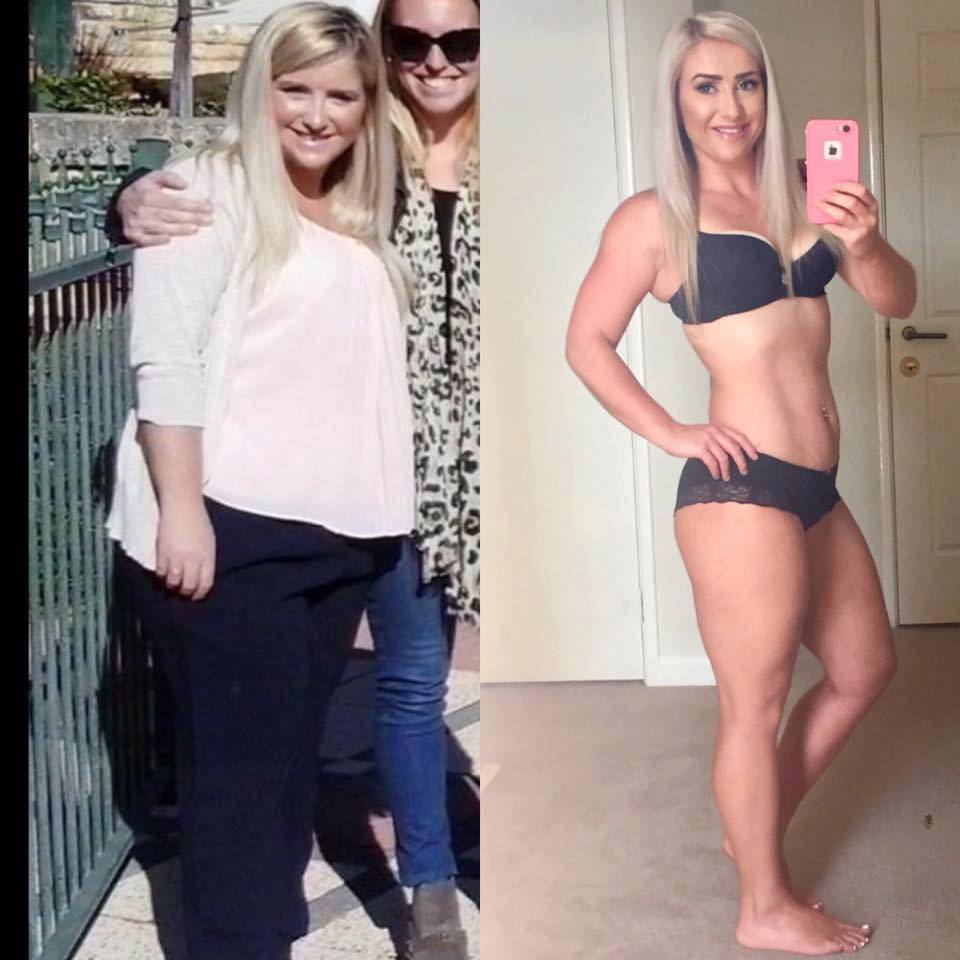You’ve heard the time period bandied round on the gymnasium, in yoga courses, or possibly even out of your private coach: “interact your core.” However what does it actually imply? Understanding find out how to interact your core helps not simply with exercises however together with your each day actions as properly.
However earlier than we delve deeper into the how, let’s clear up the what. Your core refers to a posh collection of muscle groups; many are hidden beneath the outside musculature folks usually practice.
Figuring out find out how to accurately interact these muscle groups can have a profound impression in your power, stability, and total health.
What Does It Imply to Have interaction Your Core?
Participating your core means tensing all of the muscle groups of your midsection to allow them to stabilize your physique, permitting you to hold out a variety of actions.
Throughout bodily exercise, it’s akin to offering a sturdy central hyperlink in your physique, aiding with stability and stability. That is basically totally different from merely flexing your abs, the place you’re simply tensing your belly muscle groups.
Regardless that the abs are a big a part of the core, they represent only one facet of it, explains Theresa Marko, PT, DPT, MS, a board-certified orthopedic medical specialist, proprietor of Marko Bodily Remedy in New York Metropolis. She suggests that you just consider your core “like a field in your midsection” with a entrance, again, high, backside, and sides.
In case your abs are just one facet of that field, flexing them is partaking the muscle groups on solely this facet. To “interact your core” means to recruit the entire muscle groups on this field — however the transverse abdominis particularly. “The transverse abdominis is horizontal from the again to the entrance and could be regarded as a belt in that it helps stabilize our midsection,” explains Marko.
Core muscle anatomy
Your core isn’t made up of 1 single muscle. As a substitute, it consists of varied muscle groups that perform collectively to assist your backbone and assist you to transfer your physique:
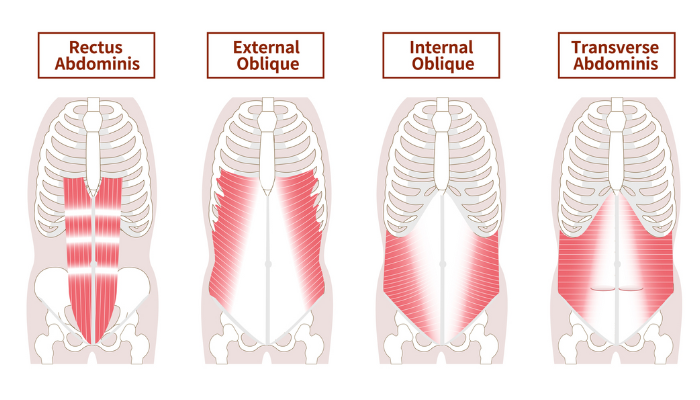
- Rectus abdominis: This muscle resides in the midst of your stomach and is often what folks consider after they discuss abs. Marko explains that the rectus abdominis helps you flex or bend your torso, primarily working in a head-to-toe course.
- Transverse abdominis: This muscle wraps round your physique horizontally and helps stabilize your backbone. Marko likens it to a hug in your inside organs. They’re additionally your deepest core muscle groups that “hold your pelvis and decrease again steady,” provides Rachel Butler-Inexperienced, CSCS, founding father of Match Aware Physique Membership.
- Exterior belly indirect: These muscle groups sit on the facet and entrance of your stomach. Not solely do they play an important function in stabilizing your core, however in addition they assist you to twist and facet bend your trunk.
- Inside belly indirect: Mendacity just under the exterior indirect muscle groups (as you go deeper in your physique, not down towards your legs), these muscle groups help in lots of capabilities: stabilizing the core, flexing and bending the trunk, and even sustaining intra-abdominal stress once you go to the lavatory.
Understanding this anatomy is essential to implementing efficient core engagement. By working in synergy, these muscle groups contribute to your total power, posture and stability throughout exercises and on a regular basis duties alike.
Suggestions for Participating Your Core
Activating this part of your physique right down to the deep muscle groups of the core is a single motion. Listed below are some cues for correct core engagement, as advisable by Marko and Inexperienced.
Begin with a fast cough
If you happen to’re a bit uncertain what it appears like to interact your core, Inexperienced suggests you “do a fast cough.” Even in the event you’ve solely simply began understanding, your physique is aware of find out how to interact your core and naturally does it once you cough.
If you cough, take note of your core. “The squeeze on the finish of your cough is your core engagement,” Inexperienced explains.
Brace for a punch
If you cough, that core engagement is fast to occur and fast to launch. However when you perceive it, you possibly can transfer on to replicating that engagement in a slower, extra aware method.
To have interaction your core, “squeeze your abs such as you’re bracing for a punch within the abdomen,” suggests Inexperienced. What you’re seeking to do is “stop it by tightening up,” says Marko.
Add your hand
“I even have folks put their arms on their abdomen to really feel these muscle groups,” Marko explains. Feeling your ab muscle groups interact together with your hand can even assist practice the motion till it turns into muscle reminiscence.
Follow different core actions
Typically folks don’t understand how their muscle groups transfer throughout three primary core actions — pushing out, sucking in, and tightening. Marko suggests going by means of all three actions (together with your hand in your abdomen if it helps) to really feel the distinction in a single session, which can assist differentiate them.
Easy methods to Have interaction Your Core Step by Step
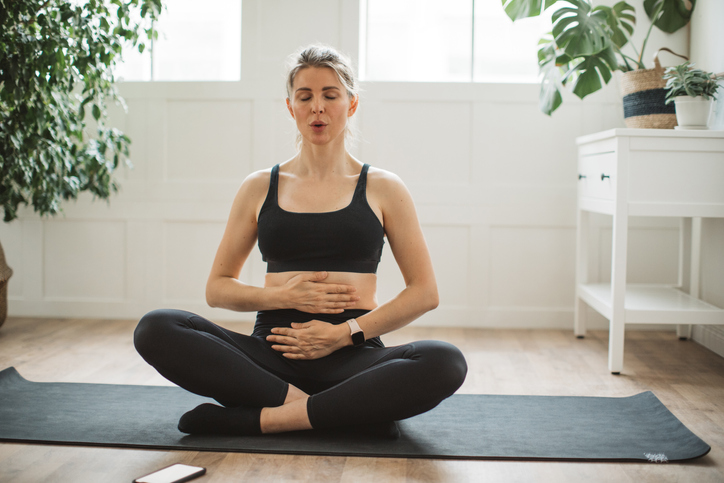
Now we are able to put all these strategies collectively for a five-step process on find out how to interact your core:
- Discover a snug stance: Stand or sit upright. Be certain that your toes are shoulder-width aside and your backbone is in a impartial place.
- Breathe appropriately: Exhale deeply, letting your stomach deflate. Inhale barely, permitting your stomach to swell. This can be a elementary course of, meant to get you accustomed to the “really feel” of your core.
- Take a deeper diaphragmatic breath: Be sure to’re taking in a “stomach breath,” which forces your abdomen to swell, as an alternative of a shallow breath that causes your chest to rise.
- Pull your abdomen to your backbone as you exhale: As you set free your breath, think about pulling your navel to your backbone.
- Maintain for a second: Keep this engagement for at the very least a second earlier than you chill out.
If you happen to discover it tough to take care of an engaged core, you possibly can slowly add time to the ultimate step every time you apply. Ideally, you must be capable to take one other breath with out dropping the engagement of your deep core muscle groups.
Advantages of Core Engagement
Participating your core is about rather more than an amazing ab image (and we’re not ones to decrease how nice a good ab image could be). Train for these deep muscle groups of the core could be tough and irritating, even for normal exercisers.
However they’re properly definitely worth the frustration and apply to excellent due to the constructive ripple results they will have in your athletic efficiency (whether or not it’s aggressive or a sport you view as a pastime) and on a regular basis motion.
Will increase stability and power
“The extra engaged your core is, the extra stability, power, and energy you’ll have whereas performing motion and train,” says Inexperienced. It is because your core muscle groups act as the middle from which all different muscle groups in your physique perform.
By strengthening these, you’ll discover that your whole-body power and stability get a big enhance.
Boosts vitality and energy
A powerful core is “the place the middle of your energy comes from,” says Marko. She suggests picturing a golfer swinging a membership to know the connection. “You should have good stability and power in your core to drive the ball far,” she explains.
May also help alleviate again ache
Studying find out how to interact your core can even assist alleviate any aches in your decrease again. One examine pitted core coaching that included workouts for partaking and stabilizing these muscle groups in opposition to conventional resistance coaching and located core-specific coaching did a greater job serving to with decrease again ache.
Promotes higher posture
Lastly, core engagement additionally performs a vital function in serving to you stand taller and straighter in your day-to-day life. It is because the muscle groups concerned can significantly affect your alignment, lowering the chance of slumping and selling a extra assured, more healthy posture.
Workouts to Follow Core Engagement
Participating your core takes time and apply. The record of workouts under get progressively more durable, so strive the simpler ones first to give attention to core engagement all through the motion.
1. Supine 90-degree leg maintain
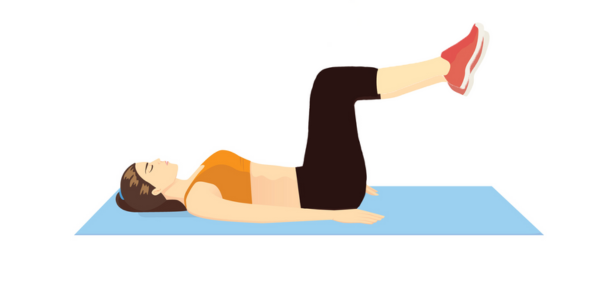
Don’t maintain your breathe whereas doing this. Marko underscores that you should proceed to softly breathe.
- Lie in your again together with your toes lifted and knees bent so your legs and hips type a 90-degree angle (shins parallel to the ground and knees stacked above the hips).
- Place your arms in your abdomen or on the ground by your sides.
- Brace for an imaginary punch to the abdomen. This can activate the transverse abdominis
- Maintain that for 3 to 5 seconds, then launch.
- Repeat a number of occasions.
2. Marching in place

Marko considers this train the following step after supine 90-degree leg holds. This motion will construct your capability to activate the transverse abdominis.
- Stand together with your toes hip-width aside and your knees barely bent.
- Have interaction your core and produce one knee towards your chest till your thigh is parallel with the ground.
- Maintain your leg on this place for 3 to 5 seconds.
- Slowly decrease this leg to the ground and repeat on the opposite leg.
- Repeat this course of a number of occasions.
3. Alternating supine heel faucets
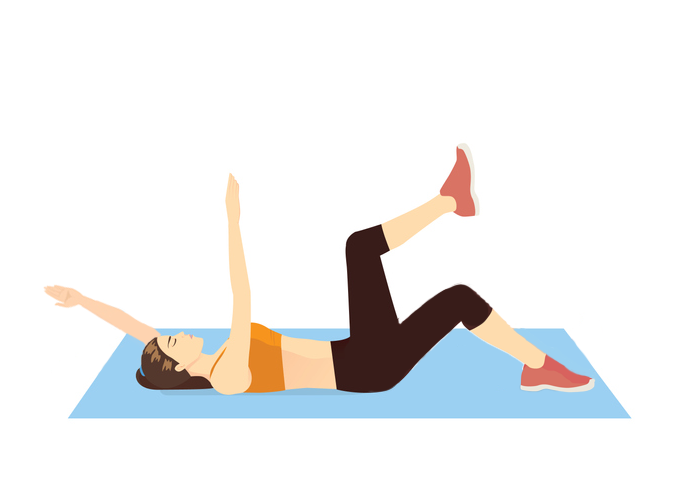
Contemplate this the superior model of supine 90-degree leg holds and a modified model of a lifeless bug.
- Lie in your again together with your toes lifted and knees bent so your legs and hips type a 90-degree angle (shins parallel to the ground).
- Prolong your arms towards the ceiling and interact your core.
- Retaining your knee bent, slowly decrease one leg till your heel faucets the ground. Concurrently prolong your reverse arm way back to you possibly can with out your decrease again lifting off the ground.
- Make sure that your core stays engaged and your different leg stays in place within the air.
- Slowly return the lowered leg to its beginning place.
- Repeat with the opposite leg and different arm.
- Cycle by means of either side 5 to 7 occasions.
4. Lifeless bug
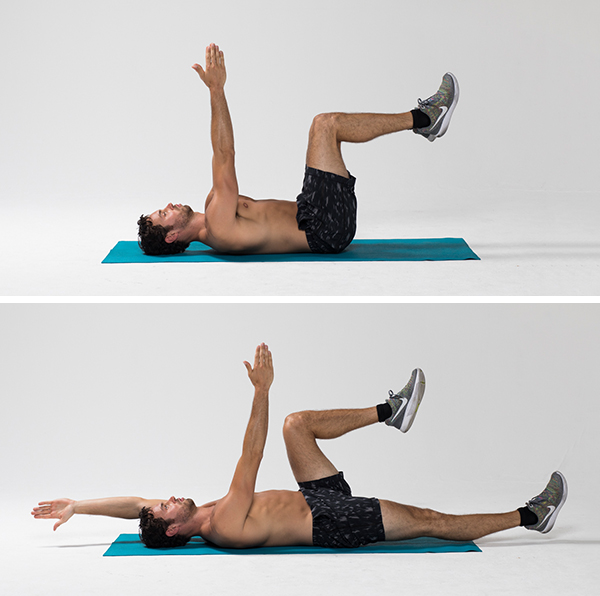
Whereas performing the this train, give attention to conserving your decrease again on the ground.
- Lie in your again and seal the area between your again and the ground by tilting your pelvis downward. Raise your toes from the ground and bend your knees so your legs type a 90-degree angle. Your knees must be stacked over your hips. Attain your arms straight as much as the ceiling.
- Decrease your left arm behind your head as you concurrently prolong your proper leg lengthy in entrance of you. Hover each your arm and your leg off the mat.
- Return again to the beginning place. Alternate sides to finish all reps.
When Ought to You Have interaction Your Core?
Ideally, you must interact your core any time you progress. “Your physique is already good, and your core must be partaking naturally once you transfer,” says Marko. That features throughout train and on a regular basis actions. Nevertheless, components comparable to life-style habits, weak muscle groups, or poor posture could hinder this computerized activation.
That’s the place core workouts turn out to be useful — they assist practice these muscle groups to interact correctly, to make sure there’s a enough carryover into on a regular basis life actions.
The advantages of partaking your core carry over to many on a regular basis actions, even in the event you’re not aware of it. Selecting up and carrying groceries, taking part in together with your canine or youngsters, sitting at your desk whereas sustaining correct posture — all of those are simpler and fewer prone to trigger damage once you interact your core.
Marko underscores that we should always apply intentional management of our physique, very similar to how we management our breath with breath-work. This aware activation, coupled with the automated one, works in tandem to strengthen our core and enhance our total bodily well being.

